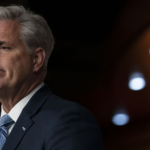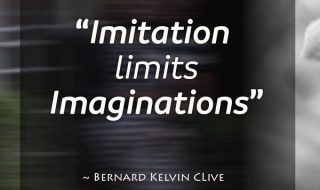
Global markets have ended a difficult month on a stronger note after the Bank of Japan stepped in to boost its economy with negative interest rates.
However, weak economic growth figures in the US underscored the scale of a global slowdown that has rattled investors.
Policymakers at Japan’s central bank stunned markets with a narrow vote to impose a 0.1% fee on deposits left with the Bank of Japan (BoJ) – in effect a negative interest rate. The central bank was spurred into action as volatile markets, flagging global growth and a downturn in China threatened major economies around the world.
In the US, news that the economy barely grew in the final three months of 2015 prompted speculation that its central bank would rein in plans to raise interest rates this year, having tightened borrowing costs for the first time in almost a decade in December. GDP rose at an anaemic annual rate of 0.7% as consumers and businesses cut back on spending, while US exports were hurt by weaker overseas markets.
Rob Carnell, economist at ING Financial Markets, said: “All in all, these GDP data support the sense given by recent monthly numbers that the US economy lost momentum into the end of 2015. We are struggling to see how this story is reversed in the coming quarters.”
Stock market investors were cheered by the prospect of US interest rates rising at a slower pace and by the Japanese move, which followed the similarly aggressive precedent set by the European Central Bank (ECB) in June 2014. The negative rate is designed to encourage commercial banks to use excess reserves – which they normally keep with the central bank – to lend to businesses instead.
The radical intervention provided an immediate boost to stock markets around the world after a dramatic start to the year that saw trillions of dollars wiped off their value in a matter of days. On Friday, the FTSE 100 in London closed up 2.6% at 6,084, to be back within a whisker of its starting level for 2016 of 6,242. That rise was mirrored around European bourses and followed a rally in Asian stock markets, where Japan’s Nikkei jumped 2.8% to a two-week high. At the time of the London close, Wall Street was also higher, with the Dow Jones industrial average up 1.7%.
Chinese shares also rallied following the Japanese rate move but still suffered their biggest monthly fall for seven years. The Shanghai Composite Index has lost 22.6% since the start of the year.
The surprise negative rates decision came just days after the BoJ’s governor, Haruhiko Kuroda, suggested he had dismissed any drastic easing measures to boost business confidence
Friday, the bank said it had not ruled out a further cut. “The BoJ will cut the interest rate further into negative territory if judged as necessary,” it said in a statement.
It said the move was intended to lessen the risk to Japanese business confidence from turbulence in the global economy, a week after data showed the Chinese economy had grown at its slowest pace for a quarter of a century in 2015.
The ECB held back from injecting more electronic cash into markets at its meeting this month but it too fired up share prices with a promise to consider more action in March.
The prospect of central banks pumping more stimulus into a struggling global economy has also helped stabilise oil prices. Brent crude, which earlier in January hit a 13-year low below $28 a barrel, stood at about $33.86 on Friday. It is still down 30% from a year ago.
Highlighting global unease about the global outlook following China’s slowdown, gold prices have gained almost 5% in January.
Friday’s estimate of US GDP from the Commerce Department was less than half the 2% annual growth rate in the third quarter and was the weakest showing since a severe winter reduced growth to a 0.6% annual rate in the first quarter of 2015.
Economists cautioned that this early estimate could yet be revised but said it still pointed to global headwinds buffeting the world’s biggest economy and suggested the US Federal Reserve would not go ahead with all four interest rate rises slated for this year. Some said the latest signs of a US slowdown left the US central bank looking unwise after December’s rate rise.
“The GDP growth slowdown sheds a rather critical light on the Fed’s decision to raise interest rates in December,” said Nina Skero, economist at the Centre for Economics and Business Research.
“For the sake of credibility, it is unlikely that the Fed will reverse its December decision, but rates are likely to stay at their current level until 2017.”
















